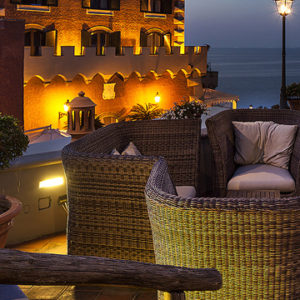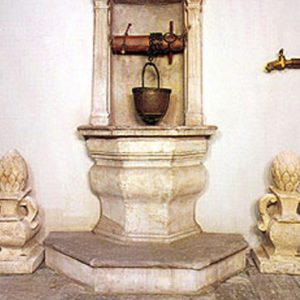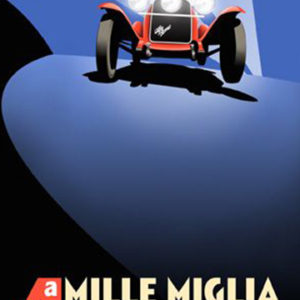Milan has always been considered one of the most important Italian cities and especially now with Expo 2015 all the spotlight is on it.
Thousands of people have visited the exhibition so far, including many foreigners, but as we pass the halfway mark of this great exhibition, we have decided to write about the city and some iconic landmarks for those who have not yet had the opportunity to visit this fantastic city.
Milan is universally renown as one of the fashion and design capitals of the world, with many fashion houses and design companies being based in the city. Milan Fashion Week is one of the main events for designers all over the world, while the who’s who of interiors flock at the annual Salone Internazionale del Mobile, which through the years has become more than an exhibition, with events taking place all over town and everyone participating.
But Milan is also and foremost my city and I don’t want to write the usual tour guide. Rather, I’d like to share with you some of my favorite places and since I love history and arts, I’ll add odd tidbits that perhaps not everyone knows about. At the same time, being a fun-loving young woman, I also know the most entertaining places to spend a great evening together. So, sit back, relax and enjoy reading the article.
I want to start from the Duomo di Milano, undoubtedly the symbol of Milan, commissioned by Gian Galeazzo Visconti and whose construction began in 1386. The cathedral is the third largest in the world after St. Peter’s in Rome and the Cathedral of Seville. It’s made entirely of marble, including statues, pillars, arches and spiers, with a total of more than 3,500 statues. The highest pinnacle is 108-meter high and on top is the statue of Virgin Mary, better known as Madonnina (literally, small Virgin Mary) and entirely covered in gold. For a long time, Duomo has been the focal point of the city. Until the mid-19th century, all the clocks in Milan were regulated by Meridiana del Duomo through a hole in the ceiling that caught the light and when it marked midday it gave a signal that made the Cordusio’s bell sound. Another little curiosity concerns the external decorations of monsters, sometimes demons. The legend goes that the devil appeared in a dream to Gian Galeazzo Visconti, commanding him to build a temple to the devil and hence the decision to include demonic figures. In reality, these figures were very common in the medieval tradition and the monsters were placed to scare the evil forces. If you are daring enough, take a tour of Duomo’s rooftops to enjoy spectacular and incredibly peaceful views of this bustling city.
Castello Sforzesco is another symbol of Milan, built in about 10 years between 1358 and 1368, again under Galeazzo II Visconti. The castle was the victim of many attacks until 1880, when the government threatened to destroy it. Fortunately, this didn’t happen and it was restored to its original splendour, intact till today.
The world-famous Galleria Vittorio Emanuele is a covered walkway consisting of two perpendicular arms that connect Piazza della Scala, Piazza del Duomo, Via Silvio Pellico and Via Ugo Foscolo. It was named after Vittorio Emanuele II, the first king of a united Italy, and built in an eclectic style typical of the second half of the 19th century. Today, we can find elegant shops, from haute couture to books and even restaurants, cafes and bars. The Gallery with Via Montenapoleone and Via della Spiga is considered one of the main places for designer shopping in Milan but it is also one of the most beautiful covered galleries in Europe.
At the center of the gallery is a coat of arms depicting a bull representing the city of Turin. Tradition requires you to put the right foot right in the centre and perform a 360° rotation with eyes closed for good luck. Interestingly, there is a hole in the centre of the mosaic, created by the many thousands of tourists and locals who did exactly that in the hope of better fortune. Definitely worth a try next time you are in Milan.
Just a short stroll away, Santa Maria delle Grazie was built between 1466 and 1490 by Giuniforte Solari. The refectory displays one of the most important paintings by Leonardo da Vinci , The Last Supper. A word of advice: If you are interested in seeing this masterpiece, book the tour in advance because waiting times are often very long.
The Basilica of San Lorenzo Maggiore, located not too far from Piazza Duomo in Corso di Porta Ticinese and fronted by 16 Corinthian columns, is a great example of Roman and pre-Christian architecture built in the late fourth century. In the evening the area turns into one of the most frequented by trendy Milanese because of the countless bars where to enjoy the fantastic tradition of aperitif in a historic atmosphere. Aperitif originated in Milan and has today become a true institution, not only in Milan, so there is no better place to experience it than here.
Going back to the arts, the art gallery Pinacoteca di Brera is another must, one of the largest galleries containing many masterpieces of Italian art between the 14th and 20th centuries.
And just behind Galleria Vittorio Emanuele, lies the theatrical museum La Scala Milano, opened in 1913. Today this fascinating exhibition includes original clothes, sets, music autographs, musical instruments and portraits.
Located south of Piazza del Duomo, the Royal Palace was the site of the old Town Hall back in 1138, medieval times. Today, the Palace is an important museum and exhibition center.
But culture in Milan is not only about art and history. Not too far from Santa Maria Delle Grazie and The Last Supper, the Museum of Science and Technology Leonardo Da Vinci is the largest science and technology museum in Italy and one of the most important worldwide.
One of the most peaceful spots and perfect retreat from the daily hustle, Parco Sempione is located between Castello Sforzesco and Piazza Sempione, where the grand Arco della Pace takes centre stage. The park itself is home to the Napoleonic Arena, the Aquarium, the Tower, the Triennale Art Theatre and the City Library. The landscape is finally perfected by small ponds and a very romantic bridge. Italian style.
But now back to Piazza Sempione. Arco della Pace was inaugurated on the 10th of September 1838 by Emperor Ferdinand I of Austria, but was commissioned many years before in 1806 by Napoleon who wanted to build a celebratory arch. This is one of my favorite places to hang out especially in the summer, there many clubs and bars with outdoor spaces where you can taste different types of aperitifs: from classic aperitif with snacks of all kinds to the most sophisticated, chic and exotic with a hint of Eastern flavour. You can sit at the tables outside the bar or stroll down to the Arch square to better appreciate the sight of the majestic monument and Castello Sforzesco in the distance. Not too shabby as a view!
Another popular chillout area is Navigli, with Naviglio Grande, Naviglio Pavese and the newly-revived Darsena, where the canals and rivers of Milan join. In the evenings it’s very popular, especially with young people, because of the countless bars and restaurants, each serving aperitifs and cocktails suitable to every taste. In the weekends the area is alive with markets and exhibitions during the day, while at night musicians and street artists perform on the streets or in bars.
Brera is another magical place to hang out, known as the Arts District it’s famous for its style and antique shops. The atmosphere is simply different here. These small cobblestone alleys in a small hidden corner right in the centre of Milan will leave you totally speechless.
And if you love wild nights at the disco, I can only advise Corso Como. Here you can find the most famous nightclubs in Milan always offering differently themed evenings, from r’n’b to hip hop or more commercial music.
For those who prefer to visit most precious places perhaps with their own history, I can only recommend Pasticceria Cova, an institution in Milan, located on the side of La Scala from 1817 and home to a club, ballroom, meeting center and evening entertainment. Its Panettone, a typical Christmas sweet, is renowned, even being loved by Giuseppe Verdi.
Caffè Campari, also known as Camparino is another must-go place, a stylish Liberty cafe’ at the foot of Piazza del Duomo, visited throughout times by prestigious names in literature, art and politics. Opened in 1867, it’s one of the symbols of the city and the first Milan coffee bar to be included within the circuit of Italian Historical Places.
Milan is also home to some excellent eateries. Dating back to the 1600’s, Antico Ristorante Boeucc is an elegant environment serving the palates of famous people, politicians, writers and musicians. This is where the Five Days of Milan started. In fact, it was in one of the taverns the riots of 1848 that started the First Italian War of Independence were initially conceived.
With its ever-evolving and yet traditionally simple menu, Trattoria Bagutta is included in the list of Milan’s historical sites. One of only three restaurants in the world home to a literary award at the national level. Opened in 1924, in 1991 it was deemed a protected bar by the Ministry of Culture because of its rich artworks adorning the walls and adding a unique charm and fascination to an already fantastic menu.
Last but not least, Jamaica Bar, opened in 1911 nicknamed the fireworks artist coffee, born as a neighborhood tavern open to everyone and location of various art exhibitions. Jamaica Bar gets its name from a journalist writing for the Milan newspaper Corriere della Sera, inspired by Hitchcock’s Jamaica Inn.
These are just some of my favorite places in the city. All you have to do now is to make your way to Milan and rest assured you will be surprised by this mesmerizing place, able to look to the future while preserving a rich history in every monument, street and venue.







































